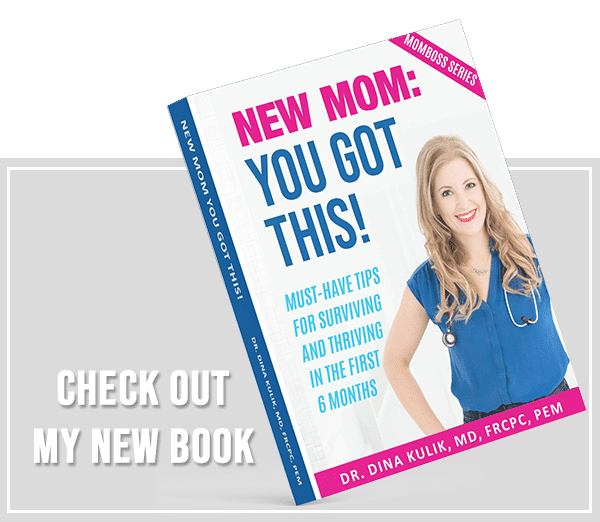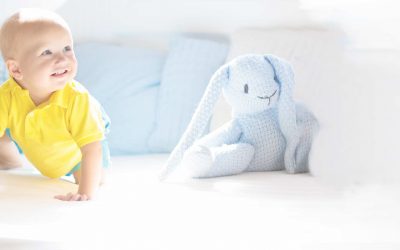10 most common newborn rashes
When your baby has a rash, it can be pretty scary for parents. We often worry a rash is the sign of something serious, though it rarely is! A newborn’s skin is very delicate and can be unfortunately plagued by a variety of baby rashes. Here are some of the more common childhood rashes
Baby Acne
Neonatal Acne (or Baby Acne) is a temporary skin rash that usually develops on a baby’s face. It is one of the most common newborn skin conditions. You may notice tiny red dots or white, tiny bumps on the surface of the baby’s skin. Baby acne occurs in around 20 percent of infants. It appears only in the first few weeks of life, and in most cases, acne resolves on its own without treatment.
Nevus Simplex
Stork bites, or nevus simplex, are also known as salmon patches or angel kisses. They appear to be a red or pink rash and are actually flat birthmarks that appear in 30% of newborn babies. They are called stork bites because of the mythical belief that they are left behind by the stork who carried the baby to their home. In actual fact, they are caused by irregular blood vessels underneath the surface of the skin.
They sometimes become more prominent with an extra fussy baby, as they become more defined when the baby cries, takes a poo or develops a fever. We find them most commonly on the baby’s head, neck, or face, often on the eyelids, forehead, upper lip, nose, and back of the neck. Your baby’s doctor or midwife can determine whether your child has a stork bite just by looking at it, and no testing needs to be completed.
Heat Rash
Heat rash, also called prickly heat, is one of the most common newborn rashes that occurs when a baby overheats, and the sweat gets trapped in the pores, making it look like the child is having an allergic reaction. Tiny red bumps can populate on any part of the body with prickly heat, but it is not serious. It can, however, make the baby uncomfortable. If your baby shows signs of heat rash, try to cool them down by putting a cool, damp rag on the baby’s forehead to lower their body temperature. Washing your baby often to remove sticky skin oils can also help to unclog the pores.
Mongolian spots
Mongolian spots or congenital dermal melanocytosis are prevalent in young children. They are flat, blue-gray birthmarks, and many parents think they are a bruise. Instead, these spots are caused by pigment that didn’t come to the top layer when the baby’s skin was formed. These usually fade over time as well.
Erythema toxicum
Erythema toxicum neonatorum is a widespread rash in newborns and often concerns parents. Many babies have erythema toxicum (up to 50% of newborns), which starts within three days of birth. The rash is blotchy and red, almost like hives. This rash moves around anywhere on the body, coming and going over the first few weeks of life. Erythema toxicum usually fades away within a few weeks of birth, and it does not require any specific treatment.
Milia
Milia are tiny white bumps, usually grouped on the nose, cheeks, and chin, though they may appear elsewhere. They develop when dead skin cells or keratin build up and get trapped under the surface of other loose skin. These resolve independently, though they will make the baby uncomfortable for a while. Please do not try to pop them, which would increase the risk of infection.
Pustular melanosis
One of the more concerning-looking baby rashes is the rash called pustular melanosis. This rash usually appears on darker-skinned newborns and sometimes develops in the birth canal rather than after birth. Tiny fluid-filled lesions appear on the baby’s skin and can appear on any part of the body, including the soles of the feet. Not to worry, though; this rash will resolve itself in a few weeks or months after birth.
Port Wine Stains
This type of rash appears on many babies, mainly on the face or neck. It results from swollen blood vessels and is called a port-wine stain because it looks like a splash of wine was spilled on the infant. Generally, the rashes will start as light port-wine stains but become darker as the child gets older. They won’t go away on their own but are non-threatening. However, port wine stains can lead to scaly or crusty skin over the birthmark, so make sure you use plenty of moisturizers to prevent this.
Slapped Cheek disease
Slapped cheek disease is also called Fifth Disease because it is considered the fifth most common of the five viral diseases that affect children. Many babies suffer from Fifth Disease, which may come with a fever, runny nose, or sore throat. Swollen lymph nodes are another indication that the skin rash is a result of the Fifth disease. However, once a rash shows up, it is usually not a contagious viral disease at that point. Use mineral oil to relieve itching symptoms, but otherwise, the disease will go away on its own.
Jaundice
Jaundice is a yellow color change of the skin and whites of the eyes. It is caused by rising bilirubin, as red blood cells break down. Jaundice typically is seen first in the baby’s eyes, called scleral icterus, and then works its way down from the head to the body if the bilirubin level rises.
Usually, jaundice can be seen within the first 24 hours of life after birth, and they peak in by 3-5 days of life. Then jaundice levels decrease over the next two weeks. Many newborn babies develop jaundice in the first week, but less than 2% develop high levels that pose a baby’s risk. However, if the bilirubin levels are too high, it can be toxic to the brain.
Babies should be assessed in the first three days of life with a blood test or a trans-cutaneous measurement to ensure the level is not high. After that, your physician or midwife will decide if the bilirubin level is dangerously high and which treatment may be necessary.
If your newborn baby has jaundice in the first 24 hours of life, or if the baby is not feeding well, is lethargic, or is not peeing or pooing enough, please ensure the baby is seen by a physician immediately.
Most babies with jaundice have what we call breastfeeding jaundice due to relative dehydration after birth. As mom’s milk comes in or the baby takes more formula, the baby’s yellow tint typically fades.
Treatment for Jaundice in Newborn Babies
Most babies with jaundice do not require any treatment at all. Jaundice will usually resolve on its own if the baby is feeding, peeing, and pooing well.
If the bilirubin level is dangerously high, the baby will require special phototherapy lights to decrease the bilirubin level. A small number of babies will need a blood transfusion if the level is very high or not responding to phototherapy. This is very uncommon. Making sure the baby takes enough breast milk or formula is most important. Don’t worry. If we detect and treat jaundice early, most babies will be healthy and develop normally.
The most common diaper rash types
Contact dermatitis
Most newborn diaper rash is caused by contact dermatitis. When pee and poo come in contact with the skin, it can become irritated and inflamed, especially when babies sleep in their filth. The skin of a baby is susceptible!
The rash will be red where the skin touches the diaper, sparing the skin in the creases that do not contact pee and poo. Sometimes it will become deep, with painful ulcers that bleed. Atopic dermatitis is similar, with the major difference being usually inherited rather than caused by contact with an external factor.
For uncomplicated or mild contact dermatitis or atopic dermatitis, I suggest applying thick layers of zinc oxide cream. I describe this as applying icing on a cake. Thick! Use the highest percentage of zinc you can find. When baby poos, gently wipe away the stool and apply more cream. The goal is to avoid seeing the red, irritated skin as it should be generously coated.
Diaper or baby wipes often have alcohol in them and can be irritating to the skin as well. If the baby has a rash, consider wiping gently with water and face cloth or tissue to clean the diaper area instead of cleaning with a diaper wipe.
I do not recommend using cornstarch for diaper rash, leading to yeast growth or thrush infections. In addition, I do not recommend using baby powder on diaper rashes, as this can be inhaled into the baby’s lungs. This can be dangerous and cause breathing difficulty.
Consider letting the area air dry with diaper-free time. Allowing the area to get dry with air can work wonders. Also, make sure that your child sits in fewer wet diapers.
Yeast diaper rash
Candida or yeast lives all over our skin. When the skin has a breakdown, as with contact dermatitis, yeast can enter the broken skin and can cause infection. Yeast loves warm, moist areas, such as in the diaper area. Recent antibiotic use can increase the risk for yeast infection as well.
Yeast on the skin typically looks like red dots around an area of redness or inflamed skin. We call these satellite lesions. Yeast usually involves creases in the skin. You may notice that this rash does not respond to treatment for contact dermatitis with zinc alone. See your healthcare provider if you think your child has a yeast infection, as medication can help.
We treat yeast infections with zinc, contact dermatitis to dry out the area, and add a topical antifungal medication, such as Cotrimoxazole. Sometimes we add a topical steroid to decrease inflammation and the pain associated with the rash.
Seborrheic dermatitis
Some children will develop a cradle cap-type rash or seborrheic dermatitis. This generally occurs on the baby’s scalp, but this looks like yellow, greasy scales that may affect the scalp and face as it spreads in the diaper area. Seborrheic dermatitis can be relieved by using a gentle shampoo or mineral oil.
Petroleum or petroleum-free jelly may also alleviate this rash. Your doctor may also prescribe a low-dose cream.
Bacterial infection
Our skin has bacteria on it, even when we are healthy. When there is a break in the skin, such as contact dermatitis, bacteria that live on the skin can grow on this broken skin, leading to an infection. These rashes look like small pimple-like lesions with lots of redness and sometimes blisters. We often describe this as ‘beefy red.’ It is painful. If you suspect a bacterial infection, please see your doctor.
If your baby has a bacterial diaper rash, steroid creams or a topical/oral antibiotic may be necessary.
How to prevent a diaper rash on your baby’s skin
The best way to promote healthy newborn skin is to change your baby’s diaper often. This is especially true when they are peeing or often pooing or having the same diaper on for long periods, like at night. In addition, applying petroleum or non-petroleum jelly or zinc oxide cream as a barrier can prevent the skin from being in direct contact with poo and pee.
Allowing for some diaper-free time can enable the skin to dry and help reduce the risk of and treat irritation. Some evidence shows that babies who wear cloth diapers, which can absorb less than the disposable type, are more likely to get diaper rashes. Parents may choose to avoid rashes by putting babies in disposable diapers, especially when sleeping overnight.
If your baby has a worsening or persistent diaper rash, please see your doctor to ensure no infection requires medical treatment.
Frequently Asked Questions – FAQ
Should I be concerned if I see a rash on my child?
Usually, no. Most rashes clear up without any treatment or pediatric care. Only a few of the common rashes are indicative of a major issue. Consult your doctor if you are unsure.
What are the most common rashes?
Common rashes include baby acne, stork bites, heat rash, diaper rash, slapped cheek disease, and jaundice. There are many others listed above and even more to be found online.
How should I maintain healthy newborn skin?
There are a few ways to make sure your newborn’s skin stays healthy and clear. One is by making sure that your baby has plenty of diaper-free time. Another is to keep their skin well-moisturized. Finally, baby skin is very sensitive, so make sure that you are using baby-safe products.
#YouGotThis

Dina is a wife, mother of 4, and adrenaline junky. She loves to share children’s health information from her professional and personal experience. More About Dr Dina.














